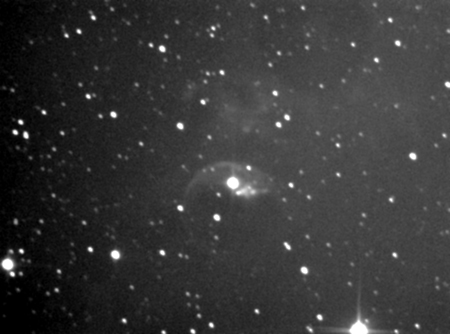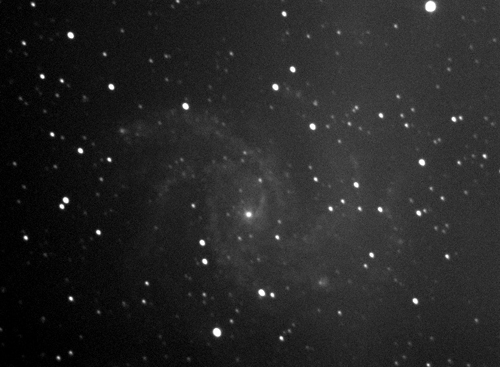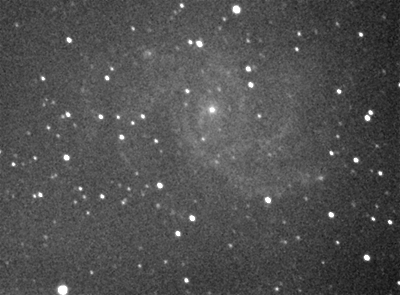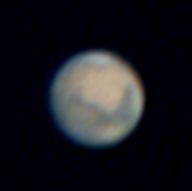Finally I got out with the new camera last night, it wasn’t the clearest of nights and by 1am there was complete cloud cover, but I managed a couple of hundred frames (FITS) which I now have to process.
The reason I have FITS and not an AVI is that K3CCDTools failed to work. I’d configured the software a few days ago and run some darkframe tests just to make sure everything was ok, but on the night it let me down. The menu let me select Atik and the camera was on the list but when I selected it the Atik control panel failed to open and the control panel icon was greyed out. I’ll have to look into this but it gave me a chance to look at ArtemisCapture which comes with the camera.
The first thing I noticed was that focusing took longer than usual, this was mainly because I’d left “auto-stretch” on which meant the image was very dark. Later I found the focus tool but I think I did an “OK” job without it.

So here it is, the image that I’ve waited a month to see, first-light with the Atik 16ic. I was aiming North West after aligning on Deneb and after slewing star to star northwards I came across M52. The image is a stack of 9 from 12x10second exposures, stacked in DeepSkyStacker and processed in PhotoShop.

I have an image of M52 taken with the SPC900NC for comparison but after putting the images together they are different orientations so while it’s difficult to demonstrate here it does give me a chance to show the difference in fields of view between the two cameras.
After taking 12 frames of M52 I moved around the sky for the next 5 hours, taking a few frames here and there just to see what I could see. What I hadn’t seen was the cloud coming over and it wasn’t until I went out to put the scope away that I realized there wasn’t a star to be seen with the unaided eye.

I couldn’t resist taking a few frames of the owl cluster (NGC457) in Cassiopeiae which I’ve also taken with the 1004x and SPC900, but I think this is my best yet.
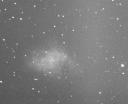 Here’s another from the same session, my best M1 so far. When you consider this was late in the session and almost certainly taken through cloud it’s not that bad. Well at least it’s recognisable.
Here’s another from the same session, my best M1 so far. When you consider this was late in the session and almost certainly taken through cloud it’s not that bad. Well at least it’s recognisable.
